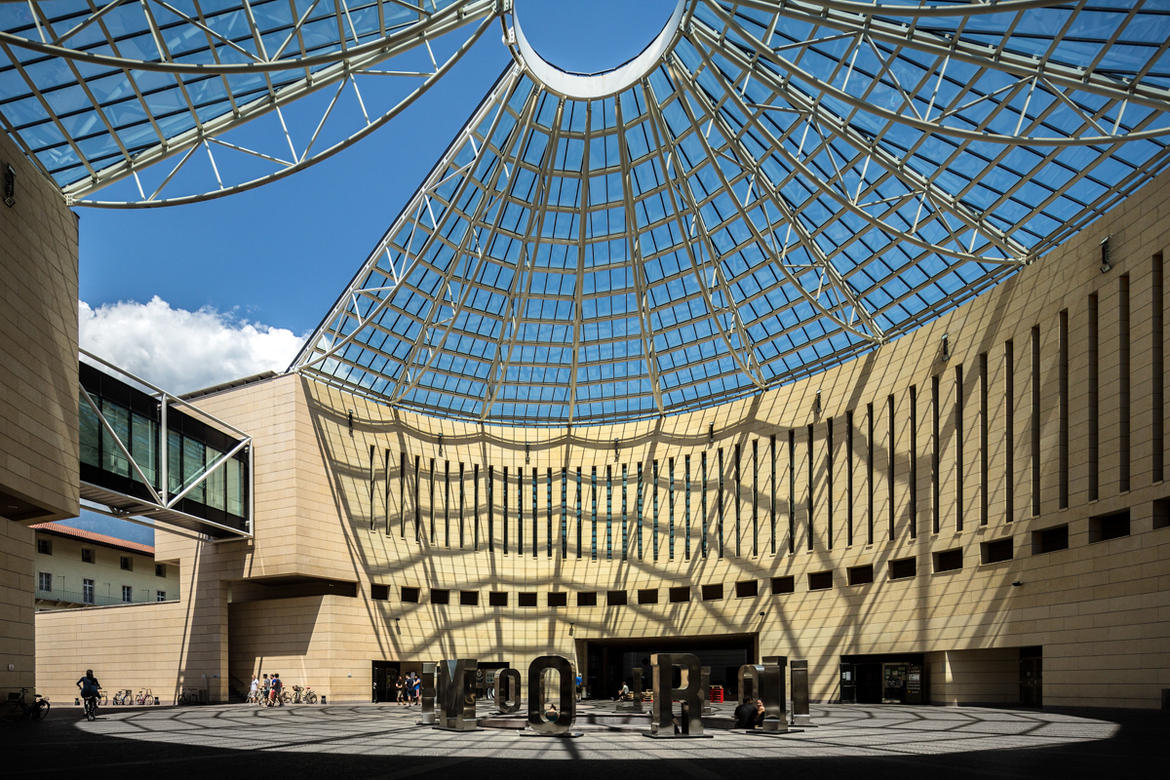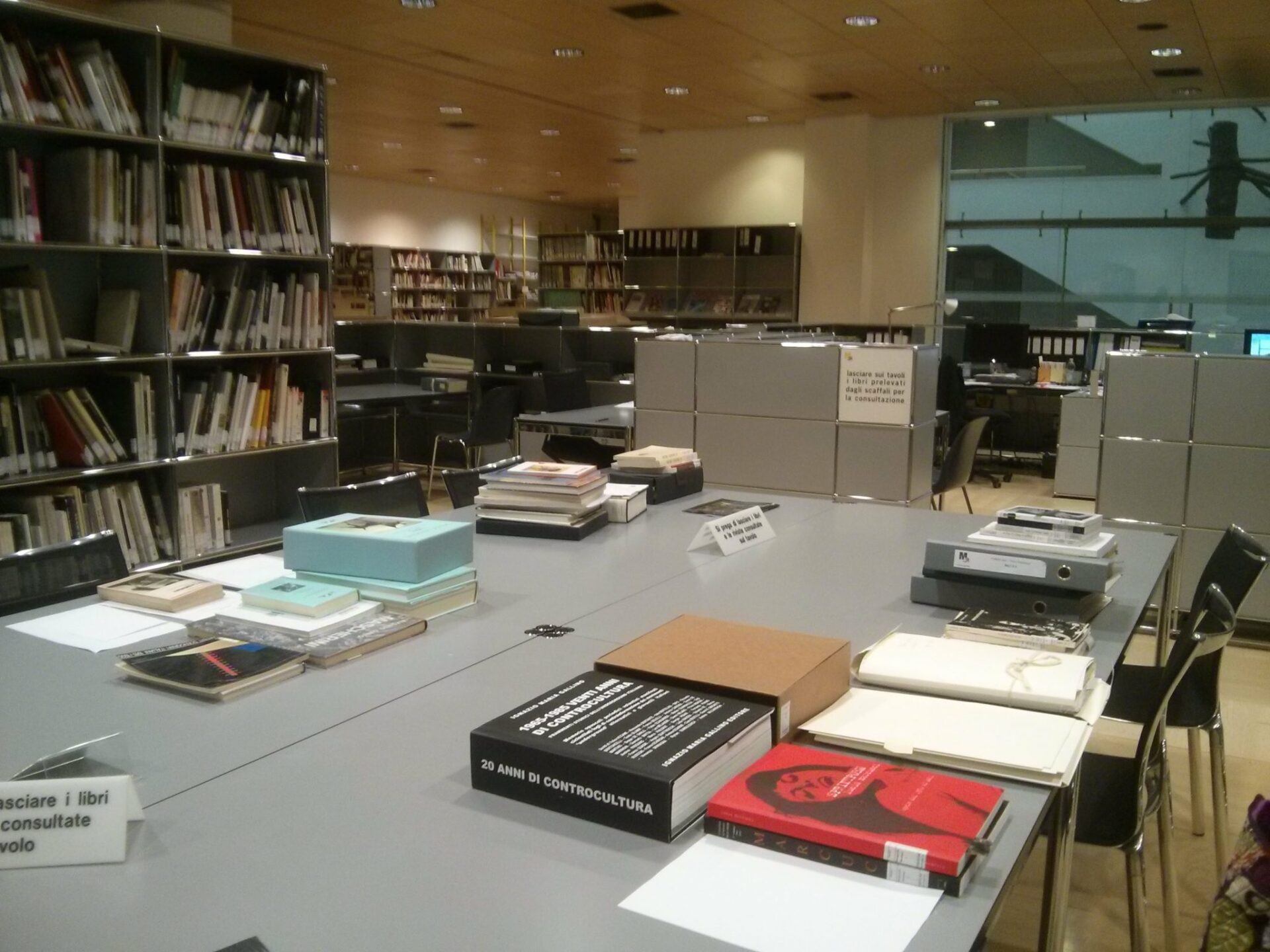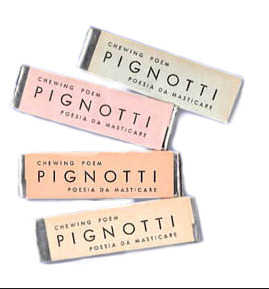Silvia Bottinelli a faculty member in the Visual and Critical Studies Department at the School of the Museum of Fine Arts – Tufts University, was one of two CIMA Travel Fellows in 2016-17. Her research in Italy took her to a variety of archives in search of material by artists focused on the domestic realm, the subject of her book manuscript in process.

Since its foundation in 1987, the Mart Museum— Museo d’arte moderna e contemporanea di Trento e Rovereto — has collected archival fonds. The hosting of art-related documents and art objects under the same roof continues to characterize the strategic choices of this institution. The Mart’s archives are located within a building by prominent contemporary architect Mario Botta. The design addresses the specific needs of exhibiting and preserving both art objects and historical documents. Thanks to such an approach, scholars of modern and contemporary Italian art can find exceptionally enlightening resources in the picturesque town of Rovereto (Trentino, Italy).
Mart’s Archivio del ’900, or 20th century archive, is grouped by subject. The collections include both personal and institutional archives related to Futurism, 20th-century architecture, theory and criticism, and Visual Poetry. Documents about such personalities as Fortunato Depero, Gino Severini, Vittore Grubicy, Angiolo Mazzoni, among others, are kept here. Scholars can get oriented by browsing the Guida all’Archivio del ‘900. Biblioteca e fondi archivistici, published by Skira. The webpage of the Archivio del ’900 also offers a thorough description of the archive’s collections.
During my research experience at Mart in March 2017, I had the opportunity to view a range of materials included in the Archivio Nuovo Scrittura (ANS) and in other fonds that concern visual and concrete poetry. I focused on documents that expanded my understanding of art and domestic cultures, as this is the topic of my current book manuscript in progress. In particular, studying at Mart helped me explore works by artists such as Enrico Baj, Mirella Bentivoglio, Maria Lai, Ketty La Rocca, Lucia Marcucci, Stelio Maria Martini, and Lamberto Pignotti.

I could access important papers that highlight these artists’ relationship to the home and the family. The intertwining of domestic life and art production is discussed in Bentivoglio’s correspondence with Betty Danon; and the ambiguous reference to family relationships emerges in Martini’s photo-novel Neurosentimental (Fondo Stelio Maria Martini). I could also learn more about the incorporation of food and cooking in the context of contemporary Italian art pieces, such as the Patacene organized by Enrico Baj and Lamberto Pignotti’s performative objects like the Eating Poems, Drinking Poems and Chewing Poems (Archivio Nuova Scrittura). Among the rare materials that I could view, it is also important to list Lucia Marcucci and Lamberto Pignotti’s film Baci, which is included in the collection Tullio Denza.

In addition to numerous and precious archival documents, Mart’s exceptional library allowed me to read published sources about 20th-century Italian art. I particularly benefitted from viewing books and articles that discuss the work of Maria Lai and Ketty La Rocca. The contribution of these women artists to 1960s and 1970s art is being rightfully rediscovered by current studies.
My book manuscript will be enriched by references to the diverse materials that I could access in Rovereto during my CIMA Travel Fellowship. Beyond the opportunity to view documents on site, the dialogue with Mart archivist Duccio Dogheria expanded my horizons and helped me consider new research directions. The enthusiasm and competence of the Mart staff at large were truly exceptional and pushed my understanding of the visual representation of domestic culture in contemporary Italian art.
Interested to read more? See related resources:
Archivio Nuova Scrittura (collection Paolo Della Grazia)
